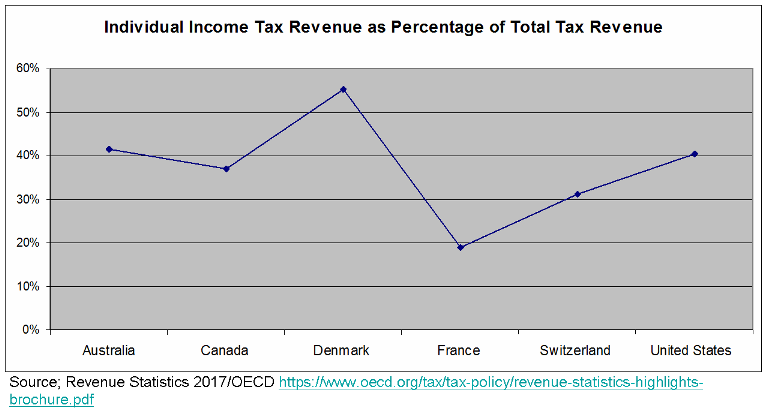First, tax revenue as percent of Gross Domestic Product, aka the Bottom Line. Tax rates are all well and good, but tax rates alone have a tenuous relationships with what's actually collected.
So how much of tax revenue collected is personal income tax and how much corporate tax? Glad you asked:
What's up with France, which collects taxes up the wazoo but apparently not in the form of personal income tax. Where is all that tax revenue coming from? Maybe from taxing corporations? I've got a chart for that:
Interesting: both Denmark and France collect more taxes than the other countries, but neither collect that much in the way of corporate taxes. Mmmmm. Maybe their corporate tax rates are low? I've got a chart for that:
There doesn't appear to be a clear pattern between corporate tax rates and corporate tax revenue, e.g., France has a high corporate tax rate but low corporate tax revenue, while Switzerland has a low corporate tax rate but high corporate tax revenue. How about the relationship between individual household tax revenue and top tax rates? As we saw above, France doesn't collect much in personal income taxes. Maybe their top rates are low?
Nope. I can't see much of a pattern here. Top income tax rates and income tax revenue don't seem to have much of a relationship. That's because the top income tax rate is a very small part of a country's overall tax picture. For instance, compared to the other countries in these charts, the French pay a lot more in social security contributions, which is not technically an income tax; Americans pay proportionately less tax on goods and services; and Denmark has the most broad-based tax system: most Danes pay high taxes, rich or not.
Three lessons here:
- It's complicated.
- It all depends.
- The US probably could collect a bit more in taxes and still be ok.




